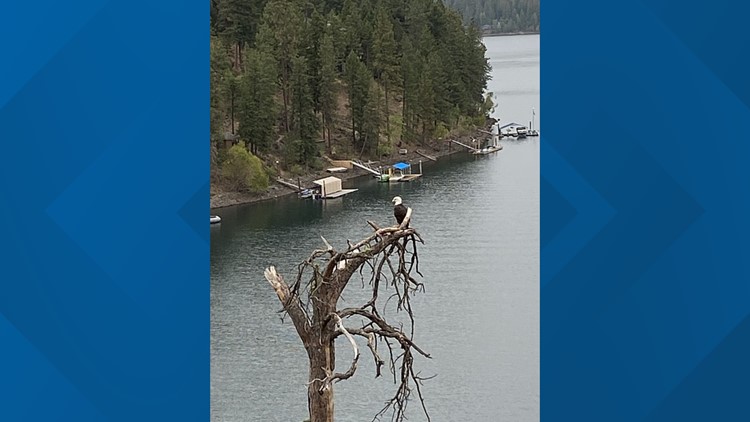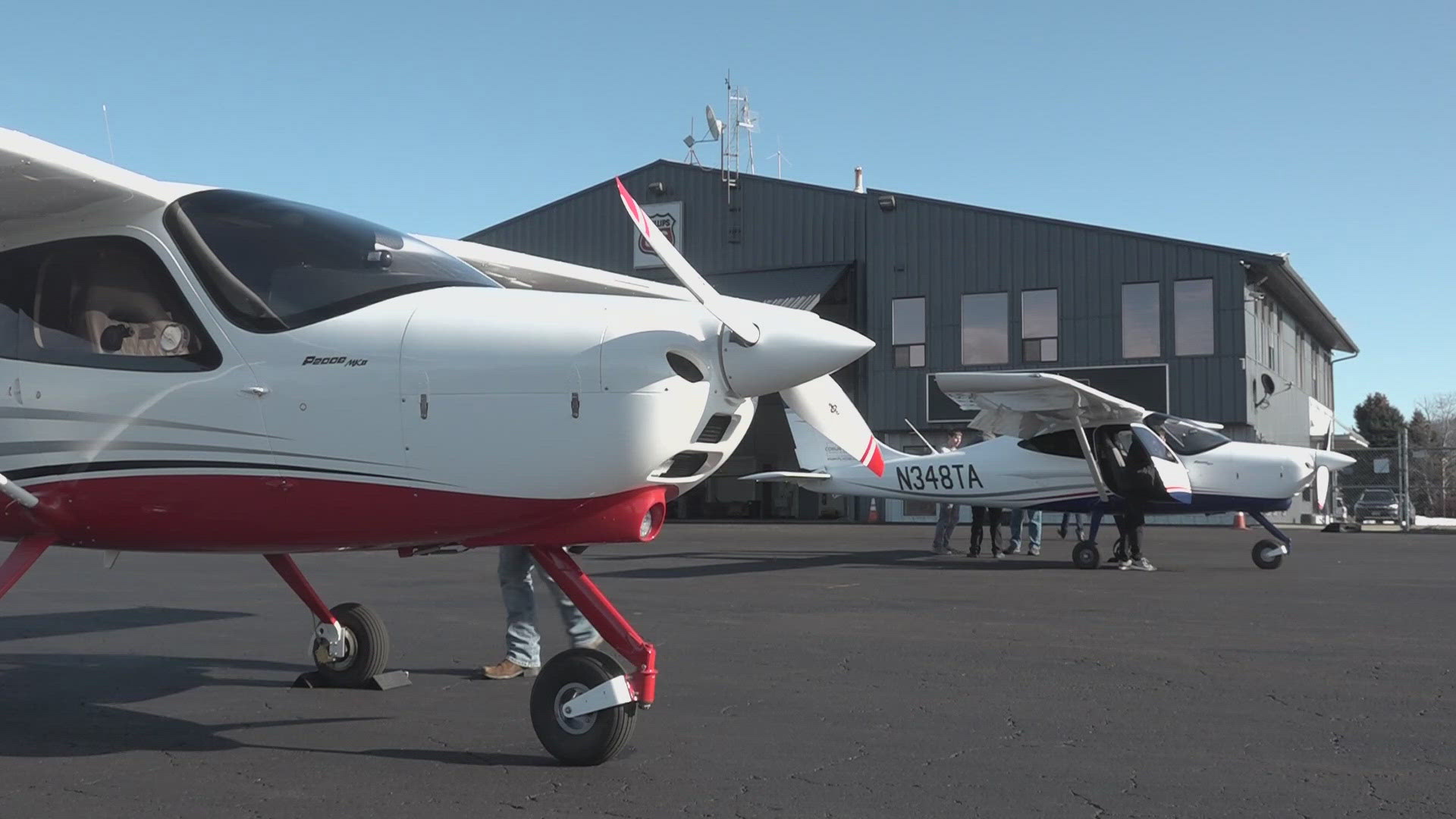HAYDEN LAKE, Idaho — The removal of a tree on private property near Hayden Lake last week left neighbors concerned because the tree contained a bald eagle's nest, as reported by our news partners, the Coeur d'Alene Press.
“That's where the nest used to be,” said Pat Volkar, a neighbor who had a view of the nest from his den, as he pointed to an empty space in the sky. “It’s like a little bit of magic has been taken away when they took that nest down.”
The property owner, Uta Bone, obtained a permit from the U.S. Fish and Wildlife Service to have the tree removed after it was determined by tree experts to be a potential danger to Bone’s home.
On Call Tree Service was in the process of cutting down the tree Wednesday, Oct. 12, but stopped immediately when workers discovered the nest and informed Bone they could not continue with the job until she obtained a permit.
The conifer pine had been struck by lightning years earlier and was damaged and dangerous in the top portion of the tree, according to On Call Tree Service lumberman Jimmy Dippolito. The large pine was within feet of Bone’s home and posed a possible danger to her structure.
“Forty percent of the tree was basically compromised, to where if the wind came it could take that top off and either smash her and her house, or the eagles would go,” said Jimmy Dippolito, lumberman.
Tree contained a bald eagle's nest
Bone recently purchased her home and didn’t feel safe with the damaged treetop in such close proximity to her roof.
“The next storm (the top of the tree) would’ve possibly come down,” said Bone. “And we are not moving in this house before this tree is taken out.”
Loggers told neighbors the tree had a crack at roughly 10 feet below the eagle’s nest and they were surprised that part of the tree was still intact.
“There’s been a lot of windstorms here recently, and that tree has withstood the test of time,” said Patrick Ender, one of Bone’s neighbors concerned about losing the nest.
Ender is one of the many people in the area who enjoys the majesty of bald eagles soaring in their backyard.
The eagles' majesty is also federally protected under the Bald and Golden Eagle Protection Act. It is illegal to take bald or golden eagles, including their nests or eggs, under Title 16, the conservation section of the U.S. Code. It can be punishable by up to $5,000 or a year in prison for a first offense.
The secretary of the interior can permit exceptions to the law under certain circumstances, including where there is a danger to the public.
“(Bone is) authorized to remove/destroy an inactive bald eagle nest to ensure public safety,” according to the language in the permit she received.
The permit does not authorize removal of the nest or destruction of any eggs if the nest is discovered to be occupied. It does instruct Bone or workers to salvage the nest and its parts and send it to a wildlife repository in Colorado.
It also requires Bone to further monitor the area for a year and avoid any future disruption to eagles or their nests.
“Nest abandonment occurs when adult eagles desert or stop attending a nest and do not subsequently return and successfully raise young in that nest for the duration of a breeding season,” according to the national bald eagle management guidelines from the U.S. Fish and Wildlife Services.
Fish and Wildlife Services could not be reached to clarify how the nest was determined to be inactive within the two days of the permit being issued.
Volkar has photos from as late as Oct. 9 of a male eagle he recognizes from the nest perched in a different tree below his porch.
The babies have fledged, according to Volkar, but he still regularly sees the family in the area.
Typically in the Panhandle, eagles are no longer dependent on their parents for food by around the end of August.
“I heard the eagles the day they were cutting the nest down,” Ender said. “It just sounded like an eagle crying. Living here as long as I have, I've learned all the different sounds they make, and that one was distress.”
The Coeur d'Alene Press is a KREM 2 news partner. For more from our partners, click here.







